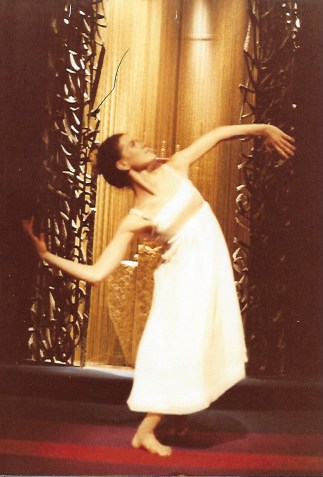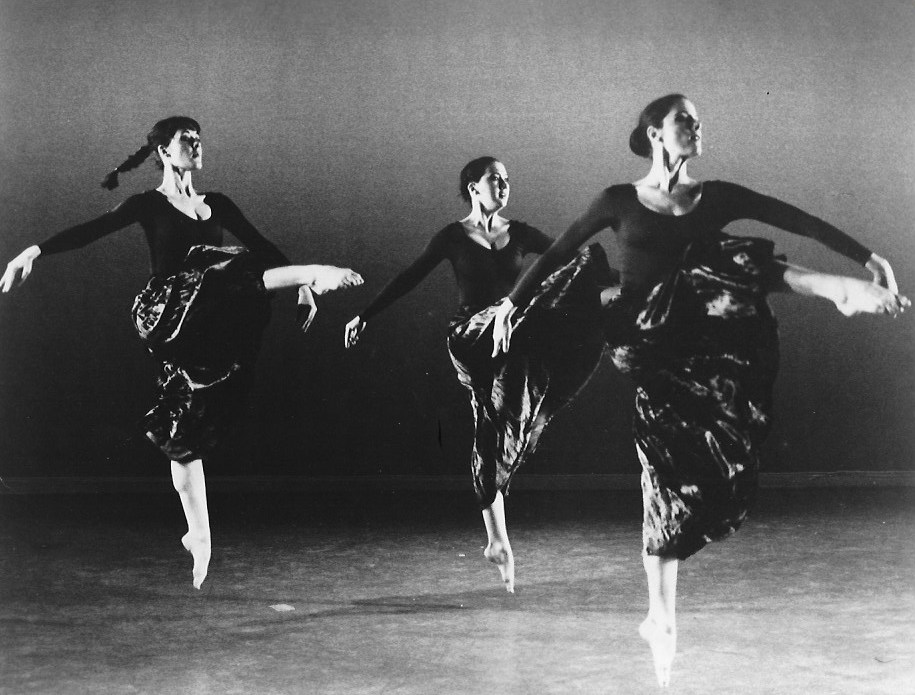For 10 years “Let My People Go” played an important role in Avodah’s repertory. One community after another put together dynamic programs forging new relationships or strengthening ongoing collaborations. In this blog I want to share memories of a Chicago performance that stands out in my mind. When I am with any of the performers who took part on Sunday, February 18, 1990, they often speak of how they remember it, too.
To begin with, this new season saw Newman Taylor Baker become a regular touring member. Kezia wrote a wonderful salute to Newman in an early 1990s Avodah Newsletter:
Newman Baker…. brings inspiring talent and extensive credentials. His bio states only that he performs with Henry Threadgill, Reggie Workman and Abdullah Ibrahim; he studied music at Virginia State University and East Carolina University, and he has taught in the public schools and at college level. But he also has patented and hopes to market a clever contraption which prevents a drum set from sliding on the floor while being played, has traveled regularly throughout the world and is a rich resource for information on the music and customs of many cultures. …. Newman’s impish smile can turn any crisis into just enough of a joke to be manageable, and we cheer as we hear the approach of the Indian bell which is always tied to his luggage. Leaving his drum set and other jazz treasures at home, Newman has scored our piece with a collection of instruments which fascinates audiences and cast alike. In our spare moments (with Newman’s generous permission), we are drawn to examine the shells, gourds, bells, whistles and other music-makers which click-clack, rattle, knock, jingle, whine and “boing” magically in Newman’s orchestration. There is always excitement when we discover Newman has brought a new toy for his symphony, and we take turns trying to kidnap our favorite item, his giant rain stick, which sifts seeds and sands in a soothing whisper. Newman’s most vocal instrument is his talking drum, which played by him speaks most eloquently; we heard with awe that this drum speaks the actual tonal language of certain African tribes. Although Newman, always humble, prefers to appear a quiet character behind his instruments, we value his professional judgment (which we seek out) and his tales of travel, and he adds much pleasure to our trips.

Newman with his blanket of instruments (Photo by Tom Scott)

and with an excited young audience member (photo by Kezia Gleckman Hayman).
Also new for the season was Christopher Hemmans. When Rob wasn’t available to tour I called my good friend Linda Kent, a member of Juilliard’s dance faculty, to ask her if she knew of a student who would be right for “Let My People Go.” She highly recommended Christopher and he quickly learned the part. My first vivid memory of the unforgettable trip was when the plane took off and I heard a scream from the seat behind me — and then Loretta saying calmly to Christopher that everything would be all right. We learned that this was the first time that Staten Island-native Christopher had ever been in a plane. When we landed in Midway airport in Chicago several young boys were totally fascinated with the tall athletic Christopher, sure he was a famous basketball player. Today Christopher lives in Germany where he teaches Yoga and regularly performs in Broadway shows. To learn more about Christopher here’s a link to a blog written in 2013 with an impressive list of the shows he has appeared in.
Mark Childs was really looking forward to this performance at KAM Isaiah Israel Congregation in Chicago because Max Janowski, a leading composer of 20thcentury Jewish music and composer of some of the most famous modern synagogue music, was Director of Music at KAM. KAM has a long and distinguished history as one of the founding congregations in 1874 of the Union for American Hebrew Congregations now known as the Union for Reform Judaism. They also had an outstanding reputation for their commitment to social justice.
Arriving in the Hyde Park area of Chicago, we found the housing was particularly elegant. The day before the performance we were taken to a lovely lunch by Mrs. Janowski, as Max was not in the best of health and was not able to join us. Seated upstairs in a lovely restaurant, we had a friendly waitress that Newman has kept in contact with to this very day. When Christopher couldn’t decide between two entrees, Newman suggested that he order both, which he (and perhaps Newman) did, to the good-humored surprise of Mrs. Janowski.
KAM had a long-standing collaboration with Liberty Baptist Church and their Sanctuary Choir was awesome. Under the musical direction of Marcus Love their voices soared. I was standing in the back of this beautiful Byzantine-inspired synagogue at Greenwood Avenue and Hyde Park Boulevard across the street from what we now know was the Obama family’s Chicago home. The synagogue was packed. As the program ended with “We Shall Overcome” the audience stood and linked hands, and voices uplifting in song brought tears to my eyes.
Deborah shared that:
What I remember was the incredible space in which we performed, the immensity of the acoustics and the beautiful, heartfelt response of the audience and their comments. They spoke of how the performance reminded them of the shared efforts between the Black and Jewish communities during the Civil Rights movement. I remember congregants afterwards speaking to one another from their different churches saying how they should get together more often for interfaith projects… how much history they shared in common, how emotional they felt… and how we as performers felt their involvement on a deep level.
The Chicago Tribune in their Quick Picks section recommended the program referring to it as a day of dance and harmony. It was!! I saved the Quick Picks article and the program cover from the performance.


 Print This Post
Print This Post
Recent Blogs
- The Pioneers of Modern Dance: My Firsthand Experience
- A Visit to a Costa Rican Art Museum Triggers a Fascination with Mascaradas
- Thoughts after Streaming a Memorial for Dance Critic Jack Anderson
- Keeping Up With What is Happening in the Dance World
- A Sijo Poem for the Winter Solstice
- Episode 33: The Universal Dancer Podcast – I’m Interviewed by Leslie Zehr
- The National Symphony of Costa Rica
- Can you go home again?
- Odd Thing to Find on eBay
- Chopping in the Kitchen














